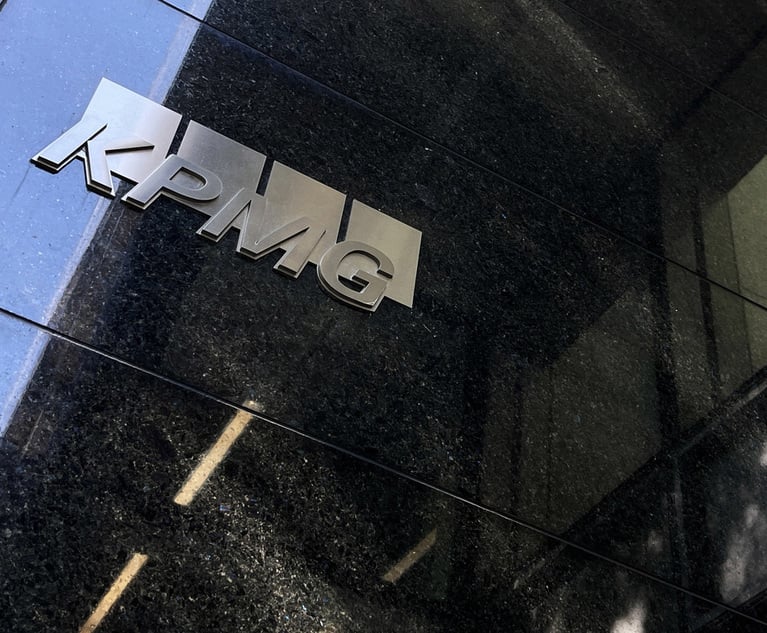Herbert Smith Freehills and Hogan Lovells miss gender targets as firms grapple with diversity conundrum
Which UK top 20 firms have targets to improve the proportion of women in their senior ranks? And which are struggling to meet them?
November 10, 2017 at 08:08 AM
8 minute read
Herbert Smith Freehills (HSF) and Hogan Lovells have narrowly failed to meet partnership gender diversity targets set for this year, as the UK's top firms continue to struggle to increase female representation among their senior ranks.
Hogan Lovells had aimed for 25% of its partners to be female by this year, a goal the firm set five years ago. However, it has fallen just short of this target, with women currently making up 24% of its global partnership.
This January's promotions round saw eight women made up out of a total of 29, equating to 28%, and the firm is now targeting a 30% female partnership by 2020.
Meanwhile, HSF has missed its own interim target for this year. The firm had set its sights on a 25% female partnership by May 2017 and 30% by 2019 and, since setting these goals three years ago, the firm has seen its female partner ranks grow by 5%. However, the current figure still stands at 22.5%.
In a statement, HSF said: "The majority of our practice areas and regions have hit the 2017 interim target, but overall we have fallen short of the 2017 target – which means our 2019 target will also be challenging. However, we have made real progress and our targets have been instrumental in ensuring that we maintain our focus, learn and improve on this key business issue.
"The depth and quality of female candidates we are seeing in our partnership pipeline is outstanding, and we are continuing to work on achieving the percentages we have set for ourselves."
Earlier this week, Legal Week revealed that Ashurst is also on track to miss a key gender diversity target for 2018, with the proportion of female equity partners at the firm significantly behind its target of 25%. The firm unveiled a series of targets in 2014, including an ambition to have women make up one quarter of the equity by 2018. However, only 15% of the firm's current partners are female.
Both HSF and Hogan Lovells have recently stepped up pressure on partners to take responsibility for improving diversity within the firms, by including it as an assessment point within reviews.
Their efforts come as other top firms take stock of how best to support their female lawyers and improve representation at partner level.
Taylor Wessing has rolled out a series of gender diversity action plans for each of its practice leaders, after conceding it would not achieve its target of a 25% female partnership by 2018.
These include elements such as succession planning, work allocation, sponsorship of key talent and agile working, while the firm is also establishing an appointments review committee to advise the board when deciding on key management roles.
 According to the firm, the aim is "to ensure a range of views are sought during the appointments process and that consideration is given to the diversity of our management team". As part of this diversity push, the firm appointed IT partner Sian Skelton (pictured) to the UK board last month.
According to the firm, the aim is "to ensure a range of views are sought during the appointments process and that consideration is given to the diversity of our management team". As part of this diversity push, the firm appointed IT partner Sian Skelton (pictured) to the UK board last month.
Of the other UK top 20 firms, nine currently have targets to improve female representation among their ranks – and some have already reached these goals – with two more (Clyde & Co and CMS UK) considering introducing targets.
Both Eversheds Sutherland and Pinsent Masons set out an intention to achieve a 25% female partnership by this year, and both are now at 26%. Pinsents has set a new target of growing female representation to 30% by 2020, while Eversheds Sutherland is currently reassessing its diversity strategy to establish its next steps.
Berwin Leighton Paisner, meanwhile, has confirmed it is currently on track to achieve its goal of 30% female UK partners by the end of next year, with the figure currently standing at 27%.
Other firms are still working on their own targets for female representation, with some making more progress than others.
Allen & Overy (A&O) has a range of targets designed to improve female representation at differing levels of seniority. By 2020 the firm wants at least 20% of its partnership to be women, 30% of annual partner promotions to be women and 30% of non-elected leadership roles to be held by female partners.
Currently, 18% of the firm's partnership is female, and this year the firm made up just two women, equating to 8% of the total round. Earlier this year, managing partner Wim Dejonghe told Legal Week that he was personally asking office managing partners, practice group heads and HR heads to "take ownership of the pipeline that candidates come from, and make those figures accountable".
Among A&O's magic circle peers, Clifford Chance and Linklaters also both have 18% female partner representation. CC has a target of 30%, but has no deadline to achieve this figure by.
Freshfields Bruckhaus Deringer, meanwhile, has just 14% female partners and, while the firm states that it is "considering a number of mechanisms that can help support us in our ambition to be more gender diverse", the firm does not have any targets to help it achieve this ambition.
Since 2014 Linklaters has aimed for 30% of new partners to be women, as well as 30% of positions on its governance and management committees.
While the firm met the 30% female target for new partners in 2014 (43%) and 2015 (30%), only 21% of 2016′s partner promotions were female, and this year's round included only five women out of 26, equating to just 19%.
However, the firm has made better progress with regards to its management committee, which is now 42% female, although its governance board still has only 23% women.
Managing partner Gideon Moore said: "We remain absolutely committed to our gender goals. Diversity in all respects is not only right, but is business critical as it allows us to deliver a better service to our clients."
Norton Rose Fulbright is also focusing on representation at its senior levels, aiming for 30% of its executive committee, global board and regional management committees and boards to be female by 2020, as well as its partnership.
Firms with softer targets include Simmons & Simmons, which is aiming for 30% of its managing associate and partnership promotions each year to be women, as well as lateral partner hires. Currently, half of the firm's elected board is female, while 16% of its global partnership are women. This year's partner promotions round fell slightly short of the 30% target, with three women made up in an intake of 12.
Gowling WLG, meanwhile, is playing the long game, aiming to have a 30% female partnership by 2026, with an interim target of reaching 25% by 2021.
Six other UK top 20 firms do not have female partner targets, although this includes Irwin Mitchell, which already has a 42% female partnership, and CMS, which is already ahead of many other major UK firms at 30%.
Bird & Bird, which has a 24% female partnership, also has no specific target it is aiming to hit. However, last year the firm piloted a women-focused training programme which provided extra support for those aspiring to be promoted, and the firm has decided to run it again in 2018.
Meanwhile, DLA Piper and Slaughter and May, which both have 20% female partners, as well as Clyde & Co on 22%, have no current stated targets to improve female representation. However, Clydes and CMS are both planning to introduce both gender targets.
Percentage of female partners globally at the top 20 UK firms:
- Irwin Mitchell – 42%
- CMS – 30%
- Eversheds Sutherland – 26%
- Pinsent Masons – 26%
- Norton Rose Fulbright – 25%
- Hogan Lovells – 24%
- Bird & Bird – 24%
- Herbert Smith Freehills – 22.5%
- Clyde & Co – 22%
- BLP – 22%
- DLA Piper – 20%
- Gowling WLG – 20%
- Slaughter & May – 20%
- Taylor Wessing – 19%
- Allen & Overy – 18%
- Clifford Chance – 18%
- Linklaters – 18%
- Simmons & Simmons – 16%
- Ashurst – 15%
- Freshfields Bruckhaus Deringer – 14%
-
 Innovation and new ideas in law will be top of the agenda at the LegalWeek Connect event later this month, with a big-name line-up of speakers gathering on 29-30 November at London's Institution of Engineering and Technology to discuss these issues and more. Click here for all the details.
Innovation and new ideas in law will be top of the agenda at the LegalWeek Connect event later this month, with a big-name line-up of speakers gathering on 29-30 November at London's Institution of Engineering and Technology to discuss these issues and more. Click here for all the details.
This content has been archived. It is available through our partners, LexisNexis® and Bloomberg Law.
To view this content, please continue to their sites.
Not a Lexis Subscriber?
Subscribe Now
Not a Bloomberg Law Subscriber?
Subscribe Now
NOT FOR REPRINT
© 2025 ALM Global, LLC, All Rights Reserved. Request academic re-use from www.copyright.com. All other uses, submit a request to [email protected]. For more information visit Asset & Logo Licensing.
You Might Like
View All
KMPG Moves to Provide Legal Services in the US—Now All Eyes Are on Its Big Four Peers

International Arbitration: Key Developments of 2024 and Emerging Trends for 2025
4 minute read
The Quiet Revolution: Private Equity’s Calculated Push Into Law Firms
5 minute read
'Almost Impossible'?: Squire Challenge to Sanctions Spotlights Difficulty of Getting Off Administration's List
4 minute readTrending Stories
- 1'It's Not Going to Be Pretty': PayPal, Capital One Face Novel Class Actions Over 'Poaching' Commissions Owed Influencers
- 211th Circuit Rejects Trump's Emergency Request as DOJ Prepares to Release Special Counsel's Final Report
- 3Supreme Court Takes Up Challenge to ACA Task Force
- 4'Tragedy of Unspeakable Proportions:' Could Edison, DWP, Face Lawsuits Over LA Wildfires?
- 5Meta Pulls Plug on DEI Programs
Who Got The Work
Michael G. Bongiorno, Andrew Scott Dulberg and Elizabeth E. Driscoll from Wilmer Cutler Pickering Hale and Dorr have stepped in to represent Symbotic Inc., an A.I.-enabled technology platform that focuses on increasing supply chain efficiency, and other defendants in a pending shareholder derivative lawsuit. The case, filed Oct. 2 in Massachusetts District Court by the Brown Law Firm on behalf of Stephen Austen, accuses certain officers and directors of misleading investors in regard to Symbotic's potential for margin growth by failing to disclose that the company was not equipped to timely deploy its systems or manage expenses through project delays. The case, assigned to U.S. District Judge Nathaniel M. Gorton, is 1:24-cv-12522, Austen v. Cohen et al.
Who Got The Work
Edmund Polubinski and Marie Killmond of Davis Polk & Wardwell have entered appearances for data platform software development company MongoDB and other defendants in a pending shareholder derivative lawsuit. The action, filed Oct. 7 in New York Southern District Court by the Brown Law Firm, accuses the company's directors and/or officers of falsely expressing confidence in the company’s restructuring of its sales incentive plan and downplaying the severity of decreases in its upfront commitments. The case is 1:24-cv-07594, Roy v. Ittycheria et al.
Who Got The Work
Amy O. Bruchs and Kurt F. Ellison of Michael Best & Friedrich have entered appearances for Epic Systems Corp. in a pending employment discrimination lawsuit. The suit was filed Sept. 7 in Wisconsin Western District Court by Levine Eisberner LLC and Siri & Glimstad on behalf of a project manager who claims that he was wrongfully terminated after applying for a religious exemption to the defendant's COVID-19 vaccine mandate. The case, assigned to U.S. Magistrate Judge Anita Marie Boor, is 3:24-cv-00630, Secker, Nathan v. Epic Systems Corporation.
Who Got The Work
David X. Sullivan, Thomas J. Finn and Gregory A. Hall from McCarter & English have entered appearances for Sunrun Installation Services in a pending civil rights lawsuit. The complaint was filed Sept. 4 in Connecticut District Court by attorney Robert M. Berke on behalf of former employee George Edward Steins, who was arrested and charged with employing an unregistered home improvement salesperson. The complaint alleges that had Sunrun informed the Connecticut Department of Consumer Protection that the plaintiff's employment had ended in 2017 and that he no longer held Sunrun's home improvement contractor license, he would not have been hit with charges, which were dismissed in May 2024. The case, assigned to U.S. District Judge Jeffrey A. Meyer, is 3:24-cv-01423, Steins v. Sunrun, Inc. et al.
Who Got The Work
Greenberg Traurig shareholder Joshua L. Raskin has entered an appearance for boohoo.com UK Ltd. in a pending patent infringement lawsuit. The suit, filed Sept. 3 in Texas Eastern District Court by Rozier Hardt McDonough on behalf of Alto Dynamics, asserts five patents related to an online shopping platform. The case, assigned to U.S. District Judge Rodney Gilstrap, is 2:24-cv-00719, Alto Dynamics, LLC v. boohoo.com UK Limited.
Featured Firms
Law Offices of Gary Martin Hays & Associates, P.C.
(470) 294-1674
Law Offices of Mark E. Salomone
(857) 444-6468
Smith & Hassler
(713) 739-1250










